anesthesia- induction
1/68
There's no tags or description
Looks like no tags are added yet.
Name | Mastery | Learn | Test | Matching | Spaced |
|---|
No study sessions yet.
69 Terms
what is induction?
the process of transitioning a patient from a conscious state to a state of general anesthesia
induction drugs are administered how?
IV (with catheters)
the induction drugs are dose-effect, so how do we administer the drugs?
slowly, with IV catheter, until the palpebral reflex is gone- if the patient still has it, we must use more drug, and cannot intubate until it is fully gone
how do we check to see if the patient is conscious/unconscious?
check the palpebral reflex
this is the first reflex to come back and the last to go away in CNS depression.
can we intubate a conscious patient?
no!- they must be fully unconscious (without palpebral reflex) to be able to intubate
how is O2 provided to the patient?
with a mask
do induction drugs have their role in analgesia, muscle relaxation, or immobility-unconsciousness-hypnosis?
immobility-unconsciousness-hypnosis
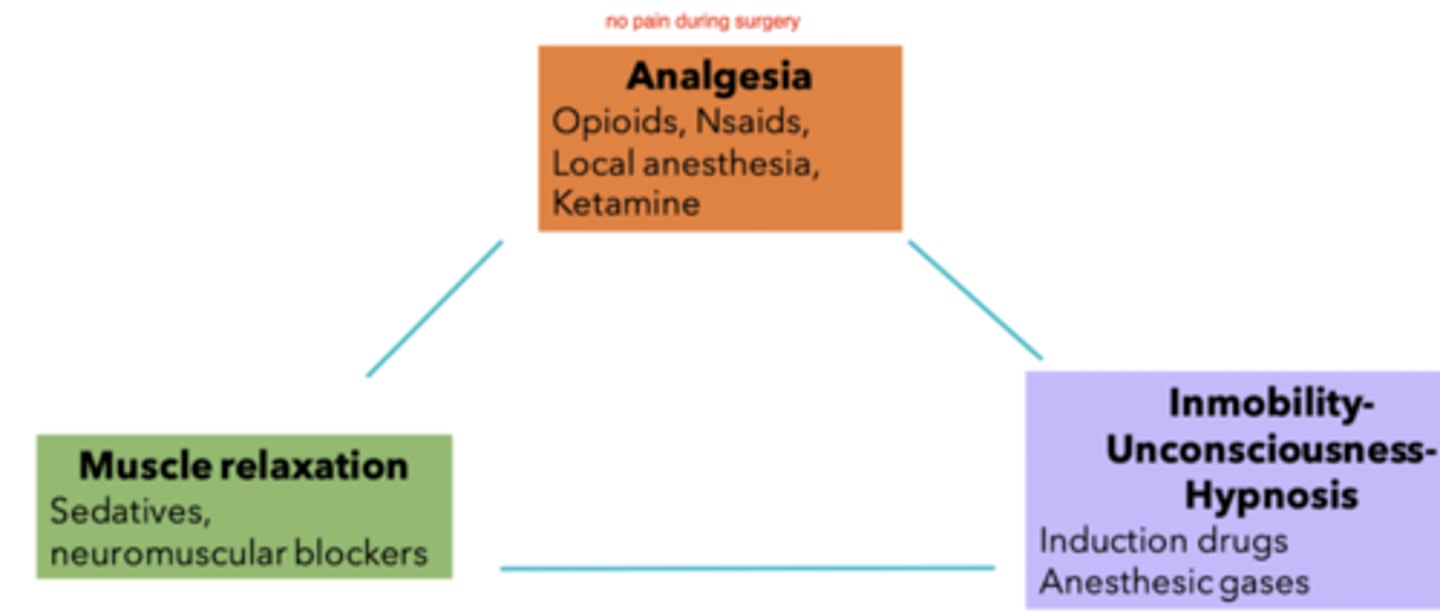
what is the MOA of most induction drugs?
they target the GABA receptor, which inhibits the synapse between neurons, allowing CNS inhibition/depression.
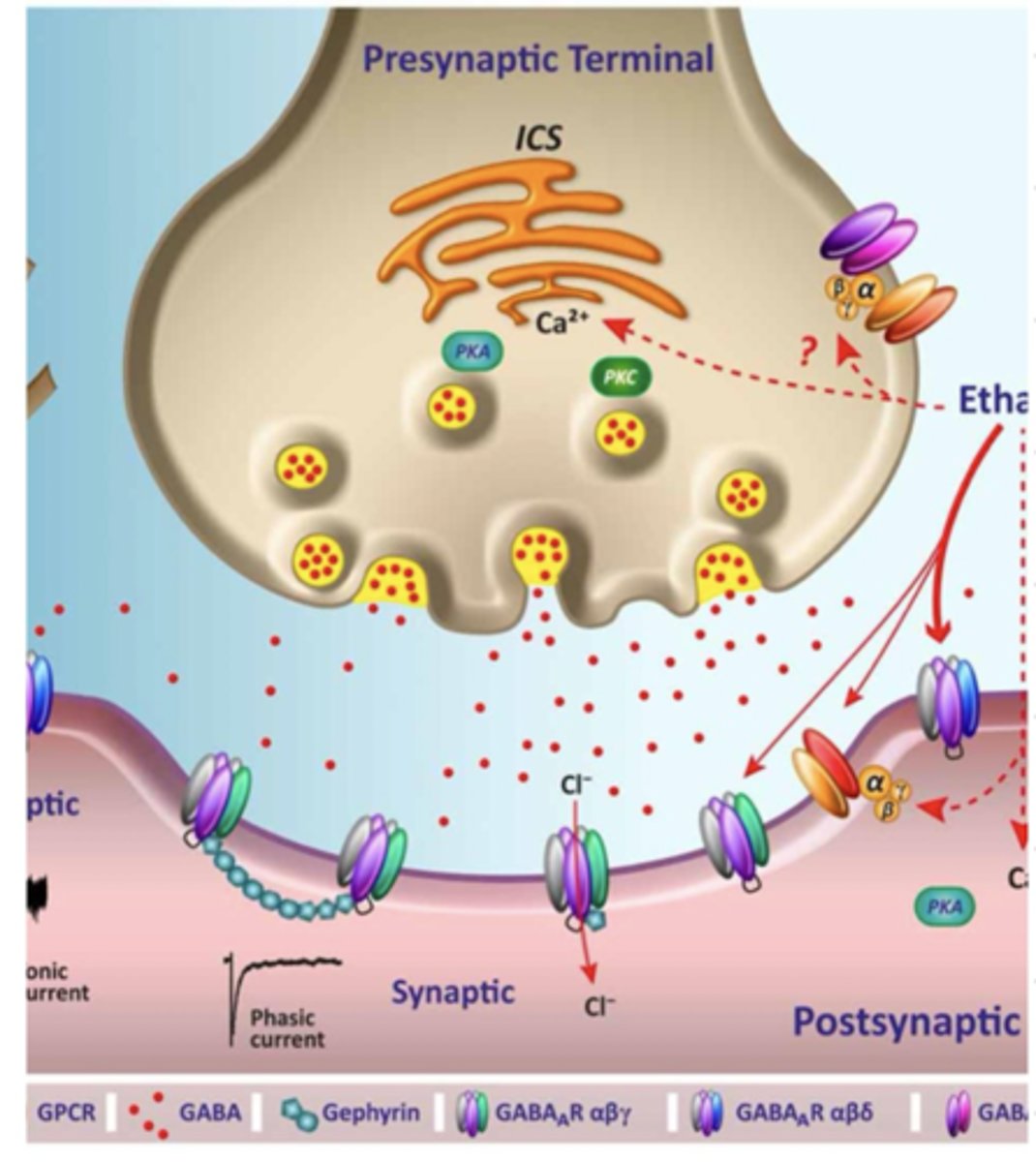
what are the 3 main effects of induction drugs on the animal?
CNS depression
Respiratory depression
Cardiovascular depression
must we provide O2 to a patient with induction drugs?
YES, because inductors depress the respiratory system. we provide O2 with a mask.
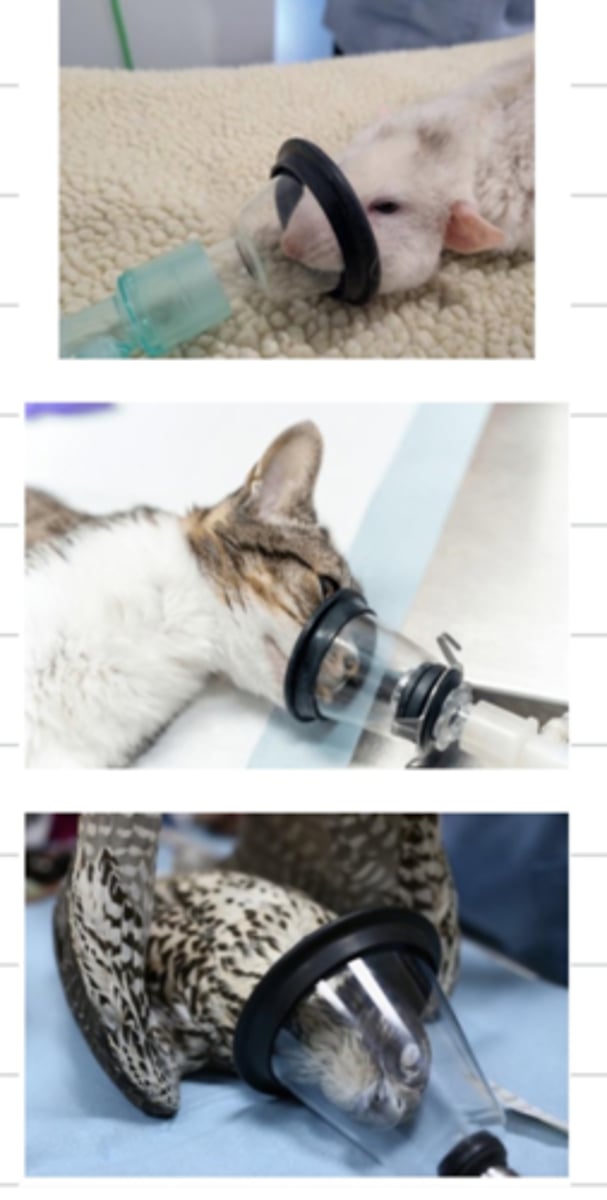
what is different about the intubation of a horse?
-we first put a hard tube in the mouth to protect the intubation tube from the horse's teeth.
-we do not need a laryngoscope because the esophageal sphincter is so strong and will not allow the tube to be inserted here
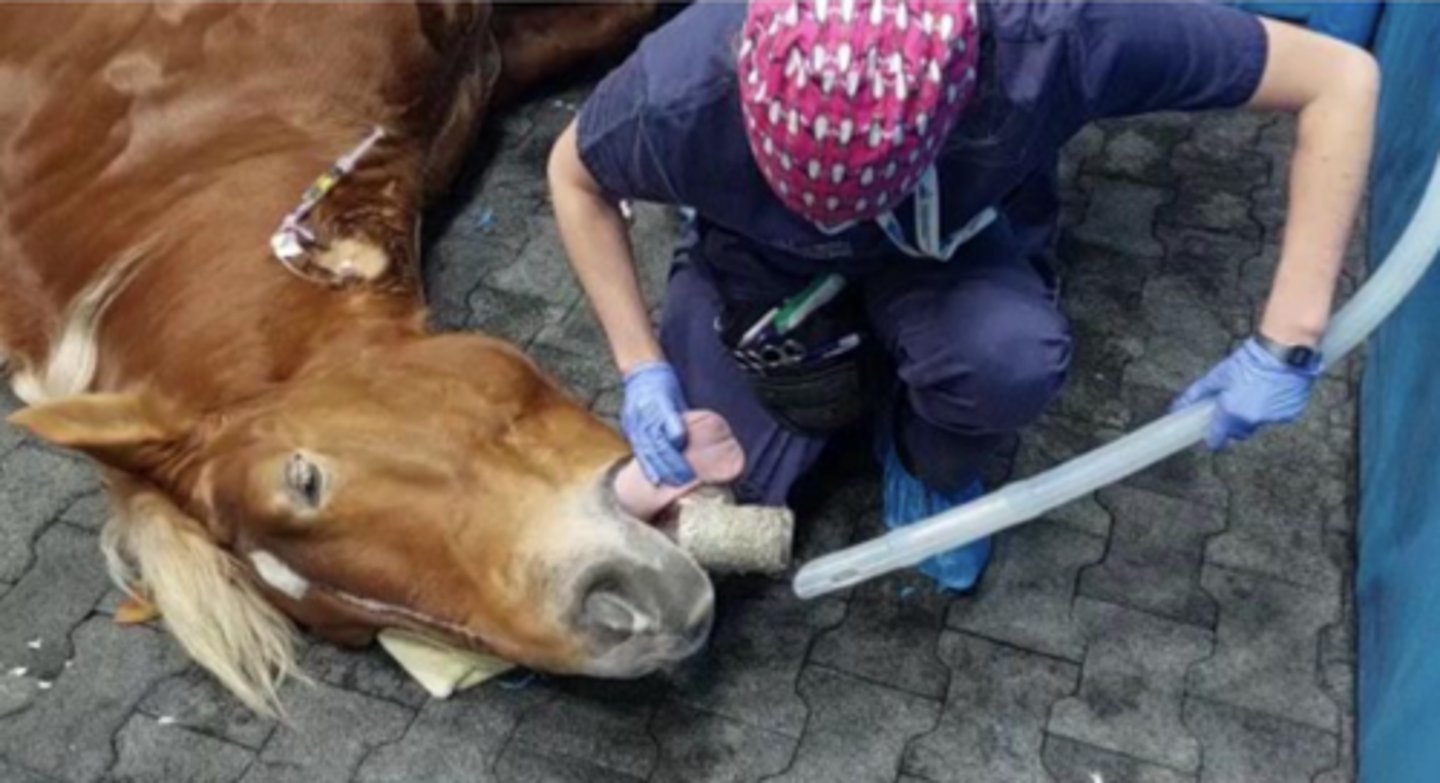
induction drugs can accumulate where in the body?
muscles
fat
other tissues
is it possible to administer induction drugs another route than IV?
yes, but we must increase the dose
are induction drugs metabolized?
yes, in the liver
what are the 5 induction drugs we use in veterinary medicine?
1. Thiopental
2. Propofol
3. Alfaxalone
4. Etomidate
5. Ketamine
thiopental is used for what?
anesthesia in equine (rescue agent if they wake up during surgery)
euthanasia in small animals
how long is the duration of action of Thiopental?
5-10 min
what is the dosage form that thiopental is available to us in?
powder- we mix it with saline
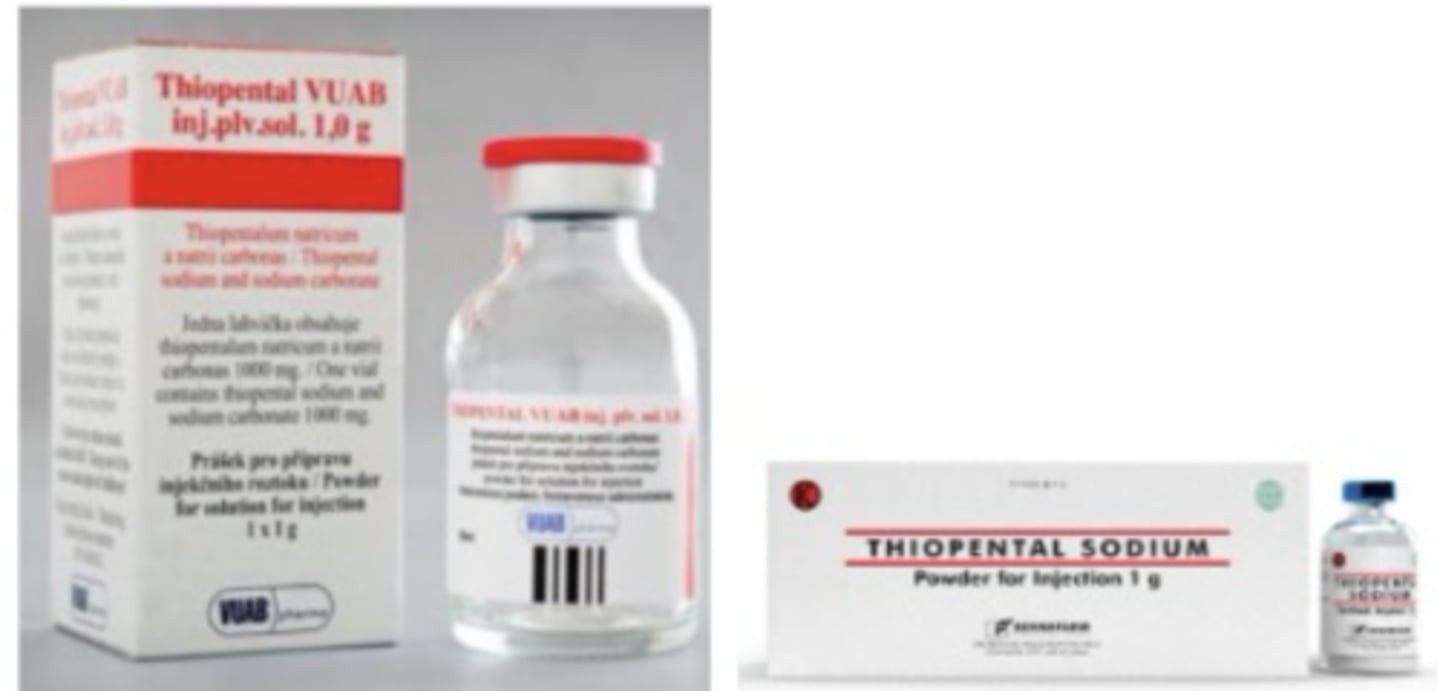
what are the problems with using Thiopental in anesthesia?
it accumulates after the second dose, so it not good for maintenance.
there is a long recovery
if we are operating on a horse and it wakes up during the procedure, what drug might we use as a rescue agent?
thiopental
what drug is used to euthanize small animals?
thiopental
how do we administer thiopental?
IV
it is available as a powder that we mix with saline
the most commonly used induction agent in small animals is...
propofol
what is propofol used for?
most commonly used induction drug in small animals
rescue sedation
anesthesia maintenance (TIVA) in dogs (not cats)
propofol is administered by...
IV (slowly)
what drug do we use for anesthetic maintenance in dogs?
propofol
(not used as maintenance in cats)
what is the duration of action of propofol?
15-20 min
what is Propofol plus?
propofol + benzyl alcohol (as a preservative)
lasts 28 days
without preservatives, propofol lasts _______ in storage (time)
24 hours
propofol is NOT used in what animals?
Diabetes
pancreatic disease
what is dangerous about propofol in cats?
multiple doses can cause Heinz body anemia
alfaxalone is a ________derivative
progesterone
the duration of action of Alfaxalone is...
15 min
how do we administer Alfaxalone?
IM/IV
what is Alfaxalone used for?
complete anesthesia with TIVA (mostly in cats)
rescue sedation in minor procedures
which drug gives a good complete anesthesia with TIVA in cats?
alfaxalone
what drug can be used in minor procedures as a rescue sedation?
alfaxalone
alfaxalone is not safe for animals with...
liver disease
what side effects might Propofol cause?
severe respiratory depression if administered too fast
painful perivascular administration
heinz body anemia in cats if multiple doses
seizure-like activity
what are the disadvantages of Alfaxalone?
expensive
not good for animals with hepatic disease
Alfaxalone is good for what type of animals?
cats, aggressive animals
etomidate is a ____ derivative
imidazole
what inductor drug is the best for an animal with cardic disease?
etomidate
is etomidate commonly used?
no
is propofol commonly used?
yes, it is the most common inductor in small animals
etomidate's action lasts ________ (time)
3-8 min
how do we administer etomidate?
IV
what are the side effects of Etomidate?
very irritant (can cause anemia)
muscle rigidity
adrenal suppression (so depresses the immune system)
painful injection
we must combine Etomidate with what other drug?
a benzodiazepine, because etomidate causes muscle rigidity
which inductor drug can suppress the adrenal glands, and therefore depress the immune system?
Etomidate
Ketamine is used for...
premedication OR co-induction
in horses, co-induction
in small animals, sedative for aggressive animals, analgesia, co-inductor
what is the MOA of ketamine?
MNDA antagonist
can we use ketamine with TIVA?
yes
can we use Etomidate with TIVA?
NO- because it causes cortisol suppression
can we use propofol with TIVA?
yes- but not in cats
can we use alfaxalone with TIVA (total intravenous anesthesia)?
yes, in cats
what are the disadvantages of ketamine?
accumulation, so poor recovery (dysphoria)
muscle rigidity
apnea (IV)
does ketamine accumulate in the body?
yes
does etomidate accumulate in the body?
NO- there is a fast recovery
does Alfaxalone accumulate in the body?
NO
most induction drugs work by _______, but ______ is a MNDA antagonist
GABA agonists; ketamine
does thiopental provide analgesia?
no
which induction drug also provides analgesia?
ketamine
which induction drugs accumulate in the body, so have a slower/more complicated recovery?
Thiopental
Ketamine
how can we administer Alfaxalone?
IV, IM
which induction drugs can be also administered intramuscularly (IM)?
alfaxalone
ketamine
thiopental is used as a rescue agent for what species?
horses
which drug is a good choice of inductor for aggressive animals and cats?
Alfaxalone
do induction drugs have a short or long duration of action?
very short- max 20 min